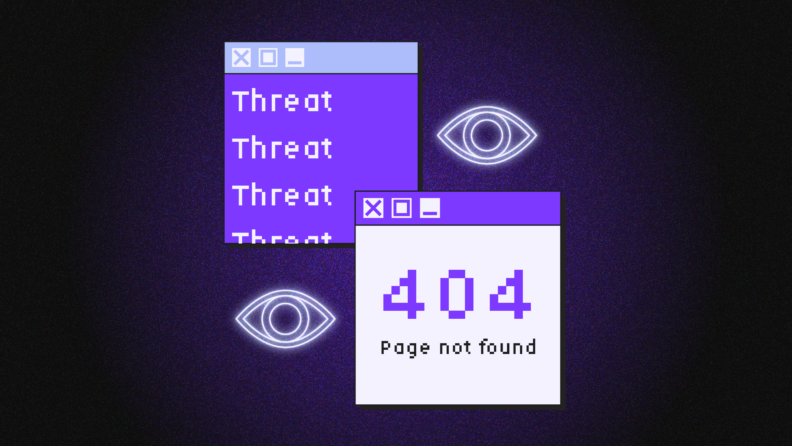Your organization's cybersecurity is at risk, and it's not just from external threats. Insider threat incidents are a significant concern for organizations because of the potential for damage caused. And they are on the rise, with 74% of organizations saying insider attacks have become more frequent. Understanding these vulnerabilities and mitigating insider threats is crucial for safeguarding your organization's assets and reputation.
This article covers ten risk mitigation strategies business leaders can implement to mitigate and detect insider threats.
Understanding Insider Threats
Insider threats underscore the critical importance of cybersecurity in safeguarding sensitive information and systems from such internal vulnerabilities.
Insider threats originate from individuals within an organization, such as employees (or former employees), contractors, or business partners, who have inside information concerning the organization's security information and event management practices, data, and computer systems.
According to CISA, an insider threat occurs when an individual with legitimate access, knowingly or unknowingly, engages in activities detrimental to the department’s critical assets: mission, resources, personnel, facilities, information, equipment, networks, or systems. These threats can take multiple forms, including violence, espionage, sabotage, theft, and cyber-related actions.
Types of Insider Threats
Insider threats are often broadly categorized into two types: malicious activities and negligent. However, a more detailed risk assessment reveals a spectrum of these threats, each with unique ways of manifesting within your organization.
Implementing a robust insider threat program, educating employees, and employing advanced detection tools are crucial strategies for addressing these challenges effectively.
Consider these six distinct potential insider threat categories and explore the types of risky data activities that security teams should be vigilant about:
- Exiting Employees: Individuals leaving the company, whether on their own accord or due to termination, pose significant insider threats. These departing employees may carry with them valuable materials or intellectual property to aid in securing new employment or, in more malicious intent cases, might leak sensitive data as an act of vengeance.
- Disgruntled Insiders: This group consists of current employees who harbor resentment toward the company. Acting on their grievances, they may engage in activities like altering or erasing vital data, leaking confidential or sensitive information, or committing various forms of sabotage.
- Careless Employees: While many insider threat prevention strategies primarily target malicious insiders, employees who are negligent in their duties often pose a greater risk. Simple oversights, like neglecting to use endpoint protections or failing to automate security protocols, can jeopardize the organization.
- Security Policy Circumventors: In an attempt to bypass what they perceive as inconvenient security protocols implemented by modern companies, some employees devise workarounds. Unfortunately, these actions compromise security measures in place, elevating the risk of data breaches.
- Unwitting Accomplices: These insiders, knowingly or unknowingly, operate at the behest of external entities. They might be coerced into divulging information through threats or bribes or tricked into sharing login credentials via social media engineering tactics.
- External Affiliates: Insiders aren't always employees. Individuals connected to third-party partners, such as suppliers, contractors, and vendors, can pose substantial threats. Despite not being on the company's payroll, these external parties – granted some level of access – can be as dangerous as internal employees with similar permissions. Detect potential threats by closely observing suspicious behavior within your network. Ensure that your security systems are vigilant and that any unusual or disruptive actions trigger an immediate response in line with your incident response strategy. Maintain strict oversight over remote access to your organization's infrastructure.
Typical insider behaviors to watch for include unauthorized data sharing, neglecting data protection procedures, system misconfigurations, and susceptibility to cybercriminals’ phishing attacks or malware attacks. Leveraging user behavior analytics (UBA) and SIEM will enhance your ability to identify malicious actors effectively.
The Impact
Insider threats can lead to financial losses, legal consequences, and reputational damage. The harm caused is often severe due to the access and knowledge these insiders possess.
Consider this recent example: One of our employees submitted a 2-week notice to their leadership team. While the team was preparing for the transition, the Cyber Guards Security Operations (SOC) Team noticed some unusual behavior. The exiting employee had begun accessing SharePoint files they did not typically interact with and downloading that content to a non-corporate device.
Even more unusual, the employee started downloading vast amounts of data that they did have authorized access to. Finally, the employee started to send files and playbooks to their personal email accounts along with uploading company data to a personal Google Drive. Cyber Guards alerted the client team and worked with IT, Legal, and HR to take swift action, which included shutting off the user’s access, wiping their work machine, issuing legal notifications, and terminating the employee ahead of their transition date.
Five Strategies to Mitigate and Detect Insider Threats
Mitigating insider threats requires a multi-faceted approach, combining technology, processes, and people.
Implement a Data Loss Prevention Program
A data loss prevention program is a set of processes, policies, and security controls that help prevent sensitive data from being disclosed, shared, or accessed by unauthorized users. This program should be tailored to fit your organization's specific needs, and it should cover data that is stored both on-premise or in the cloud. It will help you protect your organization's most valuable data assets.
Apply Security Controls
Implementing security controls that prevent users from making mistakes is another critical strategy to mitigate insider threats. This tactic includes identity and privileged access management, data access controls such as role-based access controls, misconfiguration prevention, and cybersecurity tools. Implement security policies to limit access to data according to an employee's job responsibilities and limit access to particular websites.
Prioritize physical security within your workspace. Engage a proficient security team dedicated to upholding your security protocols. Their role should include monitoring access to critical IT zones, such as server rooms or switch rack areas, ensuring only authorized personnel enter. At entry points, they should check for IT devices and record any deviations from the established security baseline. Remind all individuals to deactivate their cell phone cameras while on the premises. Always ensure server rooms remain securely locked.
Monitor Your Digital Environment for Data Loss
Another key strategy for insider threat detection is to monitor your digital environment for data loss, which involves implementing a comprehensive system of monitoring tools that reviews employees' activities and identifies suspicious activity. This approach could include monitoring data access, downloads, and uploads, as well as online communications. Monitoring activity will help your organization identify employees who accidentally make data public or may be planning to take organizational data with them on their way out.
Educate and Train Employees
An insider threat isn't always intentionally malicious. End-users can inadvertently share or leak information because they aren't trained to properly access and share data. Users are also typically untrained to properly detect and report a potential threat. By providing regular training sessions for employees, stakeholders, partners, vendors, interns, suppliers, or contractors, you give end-users the resources they need to prevent a cyber threat. The training should cover data security risks and protection, authentication, spotting phishing attempts, and data handling policies to ensure that everyone in the organization knows the risks and the measures they can take to prevent them.
In a recent incident, an employee was contacted by a known person in their contact list. The email stated that their company was updating records and needed our employee to update their information. There was a link to a SharePoint site that looked exactly like the employee’s typical sign-in page. The user entered their credentials but wisely paused before entering their multi-factor authentication code.
They stopped, took the time to inspect the URL, and sent it to IT for verification. Turns out that the employee’s training paid off! They properly recognized the URL as malicious and reported the email to the IT Team. The employee also reached out by phone to the contact who sent them an email, and they were right; the contact did not send them any emails. Turns out that their email account had been compromised.
Create an Incident Response Plan
The reality of cybersecurity is that even with the best preventive and detective measures in place, a cyber incident can still occur. That's why it's essential to have a plan to help minimize the damage from an incident and get back to operations as quickly as possible. An incident response plan is a comprehensive set of guidelines and procedures your organization can follow during a cyber incident. Companies typically plan for the “worst case” scenarios, such as ransomware, but typically overlook the risk of insider threats. The plan should include specific steps for detecting, containing, and mitigating the damage caused by an insider threat, whether intentional or accidental. These plans should be reviewed, tested, and updated regularly to remain relevant and practical.
Case Study: Sensitive Client Data
In this real-world case study, a leading cybersecurity firm recognized the potential for insider threats posed by their high-level access to sensitive client data. They established a baseline of normal network activity and implemented strict access controls, real-time monitoring, and psychological safety measures to detect and deter insider threats.
The turning point came when a senior analyst began exporting data to unauthorized external storage. The firm’s system detected the anomaly and triggered an alert. Immediate action was taken, involving discreet monitoring of the analyst's actions and a quiet audit of his recent activities.
It was discovered the analyst was inadvertently causing a breach due to personal device usage at work, contrary to company policy. The organization addressed the issue with minimal disruption and used the incident as a case study for reinforcing its internal security protocols and training, thus turning a potential insider threat into an opportunity for enhancing its security posture.
Integrating Insider Threat Mitigation Strategies
Insider threat indicators are imperative for organizations to protect their assets and reputation. They should be a priority in any cybersecurity strategy. Achieving an optimal level of cyber protection requires businesses to constantly stay aware of emerging risks in their organization and create strategies to reduce them. To deepen your understanding of how to counter these threats, exploring a range of insightful cybersecurity books can provide foundational knowledge and advanced strategies essential for any tech leader's arsenal.
Staying ahead of these threats requires not only up-to-date knowledge but also a community of informed leaders sharing insights and strategies. There are many noteworthy cybersecurity resources available for you to learn more. For CTOs and tech leaders at the forefront of cyber defense, join our newsletter for expert advice and cutting-edge solutions in cybersecurity.




